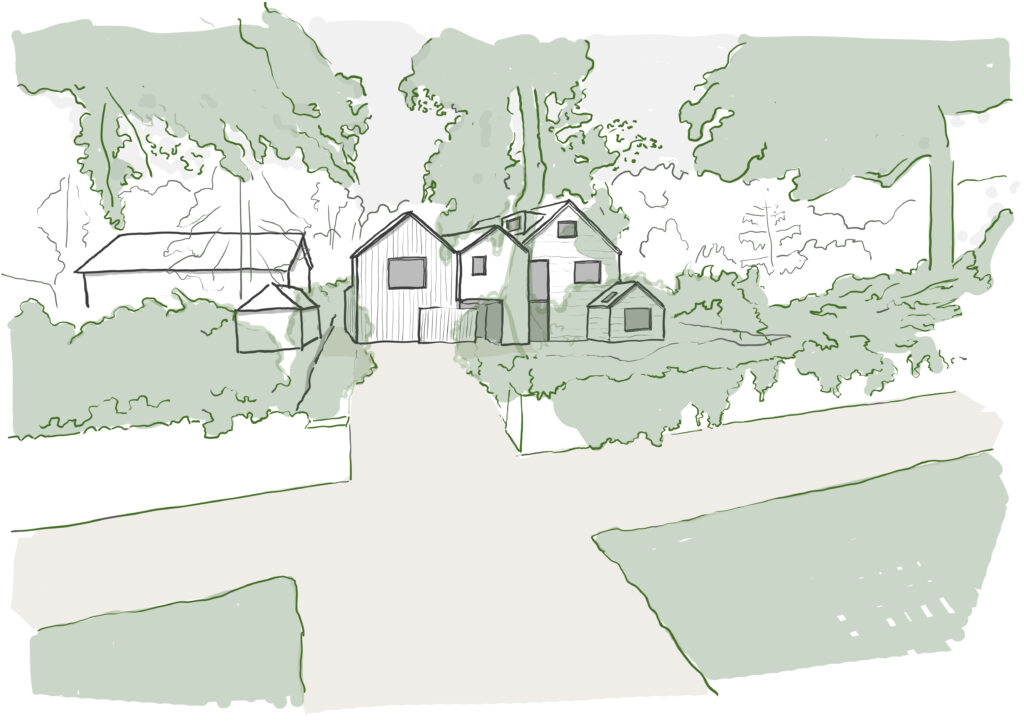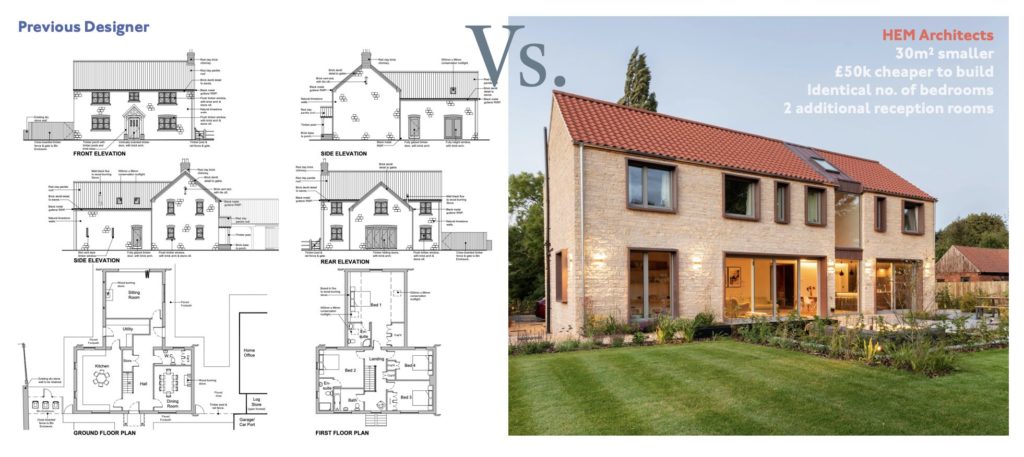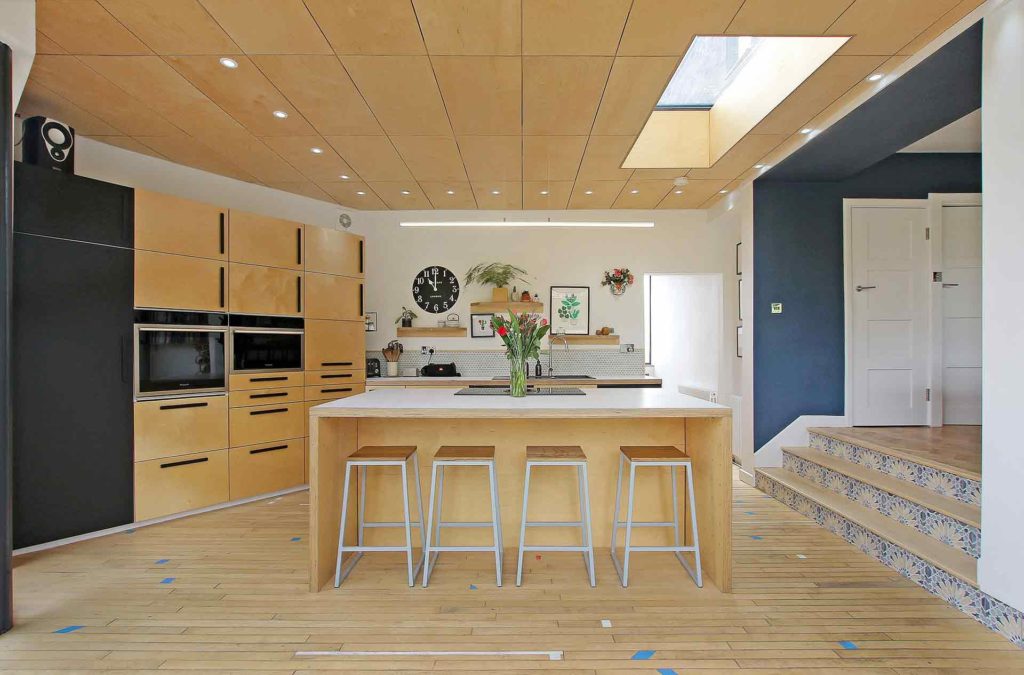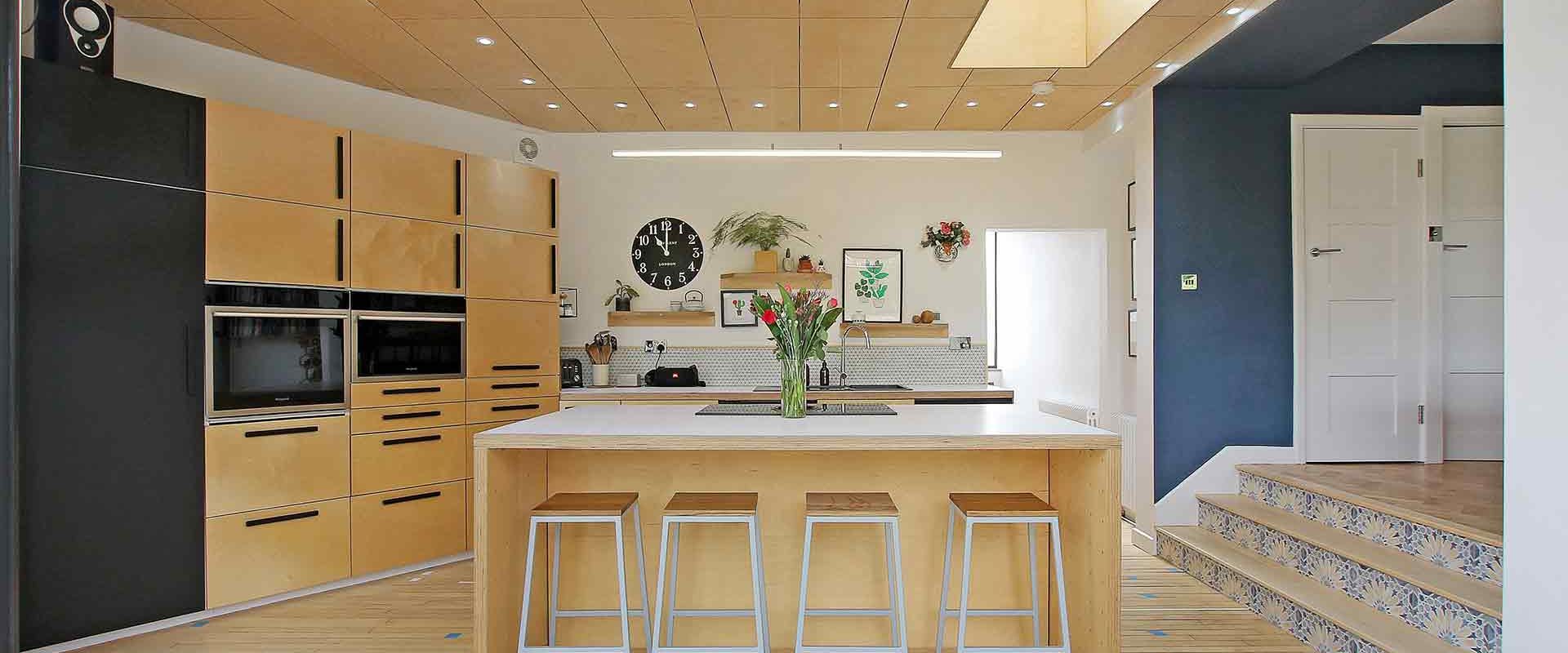We see a surprising number of people who, in the past, have completed quite major renovations and extensions on their homes without an architect being involved. They’ve hastily added bedrooms or extended kitchens. All without much thought about their long term aspirations for their home.
Now, approaching retirement and with a bit more disposable income, they’re inviting us to help them unpick things and add the light, space and flow they wish, with hindsight, they’d created originally.
We’re obviously more than happy to help but it always seems like such a missed opportunity to me.
Not only are they having to spend almost as much as they did on the original project [usually £70k+] to unpick and redo the project but they’ve missed out on all those years of enjoying a beautiful, light-filled home with their kids and creating memories in the space together.
All to save a few thousand pounds on a good architect. It’s such a false economy.
So here are our top tips for avoiding the common mistakes which you might regret later in life.
Have a long term plan
Our No 1. tip for anyone who’s planning to do work on their house, no matter their budget, is to make a long-term plan of how you’ll create your dream home and work slowly towards it.
Consider how you long you plan to live in your home. Your decisions and plan will look very different depending on whether you’ll be there for 10, 20 or 30 years.
Imagine your home when it’s finished. Think about the key rooms you need but, more importantly, what key qualities does it have?
As a minimum, most clients are looking for:
- Plenty of natural light,
- a sense of space,
- good flow,
- and a strong connection to their gardens.
A long term plan, which considers these important factors, will reduce the chance of a poorly considered extension compromising your home, reducing its value or costing lots to put right in the future.
Don’t scrimp on the design & planning stage
When budgets are tight, it can be tempting to save money by getting your builder or a draftsperson to draw up plans for your home.
However they will generally just draw what you ask them to or what’s easiest for them to build. And not what’s best for you and your family.
A good architect will help you to develop your brief and think about your home holistically. This will help you to maximise the impact any work will have on your home. And avoid causing problems with any future work.
Ideally engage an architect for the whole process, but if funds are tight, at least ask them to help develop an initial strategy that you can start working towards.
Whilst it might mean you’ve got a few £1,000 less for fixtures and finishes, it’ll help you to get the fundamentals of your home right first time. And potentially save you from spending £100,000s in the future to unpick a poorly designed extension or remodel.

More space doesn’t always equal a better home
Don’t be fooled, adding an extension to your home isn’t always the solution.
Some of our most successful projects have involved adding little or no space, instead we’ve achieved our client’s aims by reworking rooms they already have but which weren’t being used to their full potential.
Not only is this significantly cheaper than building a new extension [£1,700/m2 compared to £1,000/m2], it avoids creating problems elsewhere.
A poorly designed extension, for example, can leave you leave you with dark and dingy spaces you don’t use. So why pay for that new space if it compromises space you already have?

Invest in energy efficiency
Take a long term view when it comes to your home’s energy efficiency and comfort. It can be tempting to do the minimum required to keep build costs down and save money for nice fixtures and finishes.
But as we’ve seen over the past few years both energy prices and the British weather can be incredibly unpredictable.
Your long term plan should include how you’ll create a comfortable, healthy home which is cheap to run. It’s much cheaper to do this at the same time as other work, so plan to make improvements at the same time as other projects, even simple decorating jobs.
Treat energy-efficiency as an investment which will provide you with a long-term return, rather than just a cost. This return won’t just be financial, as a well insulated and ventilated home has also been proven to make you healthier.
Ready to invest in the comfort of your home?
Our project preparation service is the best way to kickstart your project to ensure everything runs as smoothly as possible.
Don’t rush into the project
If you’ve just moved into a new home and have plans to make it even better, remember not to rush.
Lots of clients are tempted to start work renovating their home as soon as they get the keys to minimise disruption. But take your time to get to know your home, living there for a while and experiencing different seasons.
This will give you important knowledge about where changes can have the biggest effect and how sunlight moves throughout the day. By understanding these things, you can design a home which truly enhances your living experience.
So, be patient and thoughtful as you create your perfect home.

It’s ok to phase the work
Whilst it can be tempting to try to complete all of the work to your home all in one this can be challenging and often lead to compromises.
It’s likely to stretch you both mentally, with all of the decisions that need to be made, and financially, as client’s are often surprised at how much the work they hope to achieve will cost.
Obviously, if you’ve got the budget and time to do this then that’s great. But if you don’t it usually much better to complete the work in stages rather than compromising on your dream. You’ll only regret it later.
A good Architect will help you to prioritise where to start. And help you to plan the phases so you don’t scupper your future plans in the process of completing the first phase.
Our top tip for planning where to start, is to follow you heart rather than your head. Complete the spaces you spend the most time in first, even if this isn’t the most practical thing to do.
You’ll enjoy your home so much more if the spaces you use the most are beautiful, practical and warm. This will give you energy you need to complete the rest of the house and allow you to begin to create memories in your home sooner.
Worried you might have your own regrets?
We can help you transform your home with confidence.
